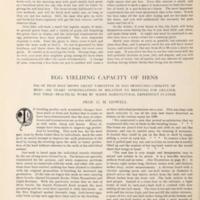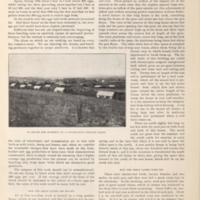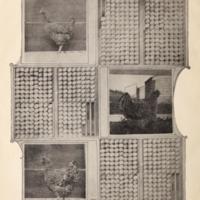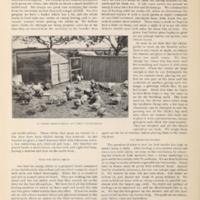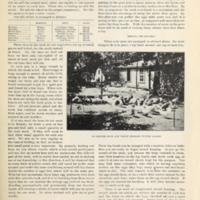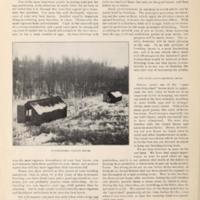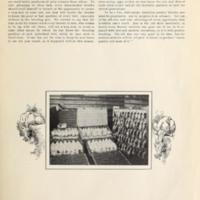Eggs and Egg Farms
See Exhibit:
Title
Eggs and Egg Farms
Trustworthy Information Regarding the Successful Production of Eggs--The Construction Plans of Poultry Buildings and the Methods of Feeding That Make Egg Farming Most Profitable
Third Edition
Date
Publisher
Reliable Poultry Journal Publishing Company. Quincy, IL
Excerpt
We have endeavored to obtain for the readers of Eggs and Egg Farms the latest trustworthy information in reference to this important and profitable branch of the poultry industry. Almost every person is in a position to make money by keeping a few fowls to supply the daily egg needs of the home table, or a greater number to satisfy the appetites of customers or friends. It is a sincere pleasure, not considering their pecuniary value, to be able to have new-laid eggs for breakfast throughout the year. The younger members of a family always relish homelaid eggs, and especially when they are laid by some particular hens that the boys and girls have learned to respect for their good qualities. Possibly the great majority of the eggs that are produced in America are laid by hens owned by the agriculturists, but we are of the opinion that the second greatest number of eggs are laid by the flocks of the village acre, or the small city lot.
To commence with the egg, you will be interested in knowing its composition and formation. Regarding the former, it has been determined that the shells of hens' eggs constitute about 11 per cent, the yolk 32 per cent, and the white 57 per cent of the total weight of the egg. According to tests made at one of the experiment stations, white-shelled eggs have a somewhat heavier shell than brown-shelled. The article, "A Practical Study of Eggs" in this book is one of the simplest and most easily understood explanations of egg formation that we have had the pleasure of reading. It not only tells the manner in which eggs are made, but it explains the reason for deformed and other unnatural eggs and tells how these troubles can be prevented.
To commence with the egg, you will be interested in knowing its composition and formation. Regarding the former, it has been determined that the shells of hens' eggs constitute about 11 per cent, the yolk 32 per cent, and the white 57 per cent of the total weight of the egg. According to tests made at one of the experiment stations, white-shelled eggs have a somewhat heavier shell than brown-shelled. The article, "A Practical Study of Eggs" in this book is one of the simplest and most easily understood explanations of egg formation that we have had the pleasure of reading. It not only tells the manner in which eggs are made, but it explains the reason for deformed and other unnatural eggs and tells how these troubles can be prevented.
Type
Collection
File(s)
Eggs and Egg Farms.jpg
(image/jpeg)
Eggs and Egg Farms Title Page.jpg
(image/jpeg)
Egg Yielding Capacity of Hens.jpg
(image/jpeg)
Egg Yielding Capacity of Hens 2.jpg
(image/jpeg)
Egg Yielding Capacity of Hens 3.jpg
(image/jpeg)
Egg Yielding Capacity of Hens 4.jpg
(image/jpeg)
Egg Yielding Capacity of Hens 5.jpg
(image/jpeg)
Egg Yielding Capacity of Hens 6.jpg
(image/jpeg)
Egg Yielding Capacity of Hens 7.jpg
(image/jpeg)
Eggs and Egg Farms Illustration.jpg
(image/jpeg)
Better Layers and More of Them 1.jpg
(image/jpeg)
Better Layers and More of Them 2.jpg
(image/jpeg)
Better Layers and More of Them 3.jpg
(image/jpeg)
Better Layers and More of Them 4.jpg
(image/jpeg)
Better Layers and More of Them 5.jpg
(image/jpeg)
Trap Nests 1.jpg
(image/jpeg)
Trap Nests 2.jpg
(image/jpeg)
 An official website of the United States government.
An official website of the United States government.




